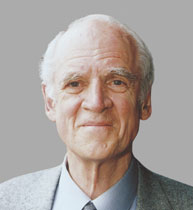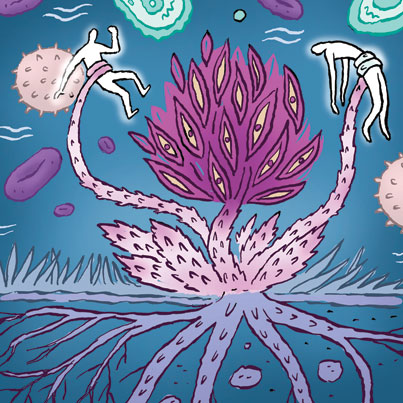Insights (Page 3)
KYOTO CALLING

His is a storied career by any measure, but the past year has been particularly heady for CHARLES TAYLOR, BA'52. In May 2007, the emeritus professor of philosophy at McGill received the £800,000 Templeton Prize for Progress Toward Research or Discoveries about Spiritual Realities, the world's largest annual monetary award for an individual. Then the scholar joined forces with sociologist Gérard Bouchard to chair the Quebec government's high-profile "reasonable accommodation" commission. This past June came the latest feather in his cap: Taylor became the first Canadian to win Japan's Kyoto Prize for arts and philosophy.
Nicknamed "Japan's Nobel," the 50 million yen (approximately $480,000) Kyoto Prize is considered among the world's leading awards for lifetime contributions to the scientific, cultural and spiritual development and betterment of humankind. The prize recognizes Taylor's career-long philosophical investigation into how people of different backgrounds can retain their multiple identities while living together peacefully—and the global importance of including spiritual dimensions in public discourse. He will receive his award on November 10 during a ceremony in Kyoto, Japan.
The Kyoto Prize is an initiative of the Inamori Foundation, an organization dedicated to promoting "peace and prosperity among all people on earth through the promotion of mutual understanding." Previous prize recipients include filmmaker Akira Kurosawa (1994), primatologist-conservationist Jane Goodall (1990) and linguist-activist Noam Chomsky (1988).
"I am very, very honoured," says Taylor. "I feel a great sense of agreement with, and affinity for, the basic standpoint of the Inamori Foundation."
Taylor isn't using his latest prize as an excuse to rest on his laurels. Even though it's only been a year since he published his mammoth A Secular Age— hailed by the New York Times as "a work of stupendous breadth and erudition"— he's got plenty of academic irons in the fire. "The commission put me so far behind," he chuckles, "that I have a whole lot of papers that I have to get going."
Where cancer grows

Matthew Forsythe
Gardeners know that a plant can flourish in one microclimate, yet flounder a few feet away. Now scientists from the McGill Cancer Centre and the Research Institute of the McGill University Health Centre have learned that similar microenvironments not only exist within the human body, but play a crucial role in determining whether cancer cells prosper or fade.
The MUHC team analyzed tissue from 53 breast cancer patients. Using laser capture microdissection (LCM), they separated tumour cells from their surrounding microenvironment (known as the stroma) and then analyzed the gene expression patterns exhibited in the stroma samples.
From the thousands of genes they examined, the McGill researchers identified 163 that correlated with patient outcomes, either good (no tumour metastasis or migration) or bad (non-responsiveness to therapy). The team further identified a panel of 26 genes that could be used to accurately predict clinical outcome. This 26-gene profile, called the stromal-derived prognostic predictor (SDPP), was used to correctly forecast the outcomes in a second set of breast cancer patients.
"A tumour cannot exist on its own. It has to be supported and nourished by the cell types around it, the microenvironment," says senior author MORAG PARK, director of the Molecular Oncology Group at the Research Institute and also the newly appointed scientific director of the Canadian Institutes of Health Research's Institute of Cancer Research.
"Different patients have distinct tumour microenvironments at a gene level. Our findings show that the gene profile of these distinct microenvironments can be used to determine clinical outcome—who will fare well and who will not."
The team, which published its findings in Nature Medicine, is now developing SDPP into a functional diagnostic test, which they anticipate will be ready for clinical trials within a year.


